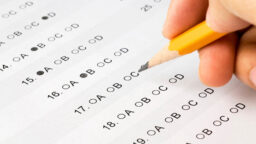The College Board has just revealed that it will attach an “adversity score” to every student who takes the SAT. That way, college and university admissions departments can better understand applicants’ social and economic backgrounds.
Each SAT taker’s “adversity score” will be a number between one to 100. The scores are calculated by using 15 factors, including crime rate and poverty levels in each student’s high school and neighborhood. Students won’t be able to see their scores, but colleges will.
In recent years, wealthy children with college-educated parents have generally scored higher on their SATs than those from less privileged backgrounds. So seemingly, the College Board established this program to, in part, level the playing field, and enable admissions counselors to consider the hardships less-privileged students endure.
The College Board has played around with the idea of an “adversity score” for some time. Last year, 50 colleges and universities took part in the beta test. And this year, 150 schools will participate in a pilot before the program becomes widely available in 2020.
However, this program has conveniently accelerated in the wake of the college admissions scandal, which shed light on how much wealth and privilege can improve a student’s chances of being accepted by the college or university of his or her choice.
And following the admissions scandal, many higher education institutions have been under pressure to come up with measures to guarantee their systems will no longer be subject to bias and privilege.
So, could attaching students with a “adversity score” be the solution they are looking for?
The short answer is, partially.
It is clearly a step in the right direction, but many worry that it is too much of a quick-fix solution.
“I think that the college board does have good intentions here, but I do think the roll-out certainly feels rushed,” said Rodney Morrison, Associate Provost for Engagement and Retention Management and Enrollment and Retention Manager for Stony Brook University.
And some doubt it will have much of an affect on admissions at all.
One of those doubters is Jeff Selingo, an author, professor and visiting scholar at Georgia Tech, who observed the “adversity score” program while it was in beta.
He recently tweeted: “Last year at the @CB_Forums, there was a lot of push back among the beta testers about how helpful this really is. I saw it in action at 3 institutions this year. App readers rarely looked at it. They have too much else to review and think they ‘know the high schools’.”
Additionally, many colleges and universities are putting less of a focus on SAT scores, altogether. And some schools, such as Bates College, Bowdoin College, George Washington University, Hofstra University, and the University of New Hampshire, have even decided to become “test-optional” and no longer require applicants to take the SAT.
And finally, students’ adversity scores are supposed to shine a light on the “adversity” they have overcome. But, Michael T. Nietzel, the former president of Missouri State University, makes a compelling point in a Forbes opinion piece that dismisses this notion.
“Measuring neighborhood adversity is not the same as assessing an individual student’s resilience or grit,” Nietzel wrote. “Although we can’t know for sure, it’s doubtful that adversity scores measure the influence of parents, siblings, and mentors on a student. There’s not a straight line from socioeconomic background to SAT performance; assigning an adversity number suggests an influence that may not be operating for individual students, and it probably overlooks influences that are.”



